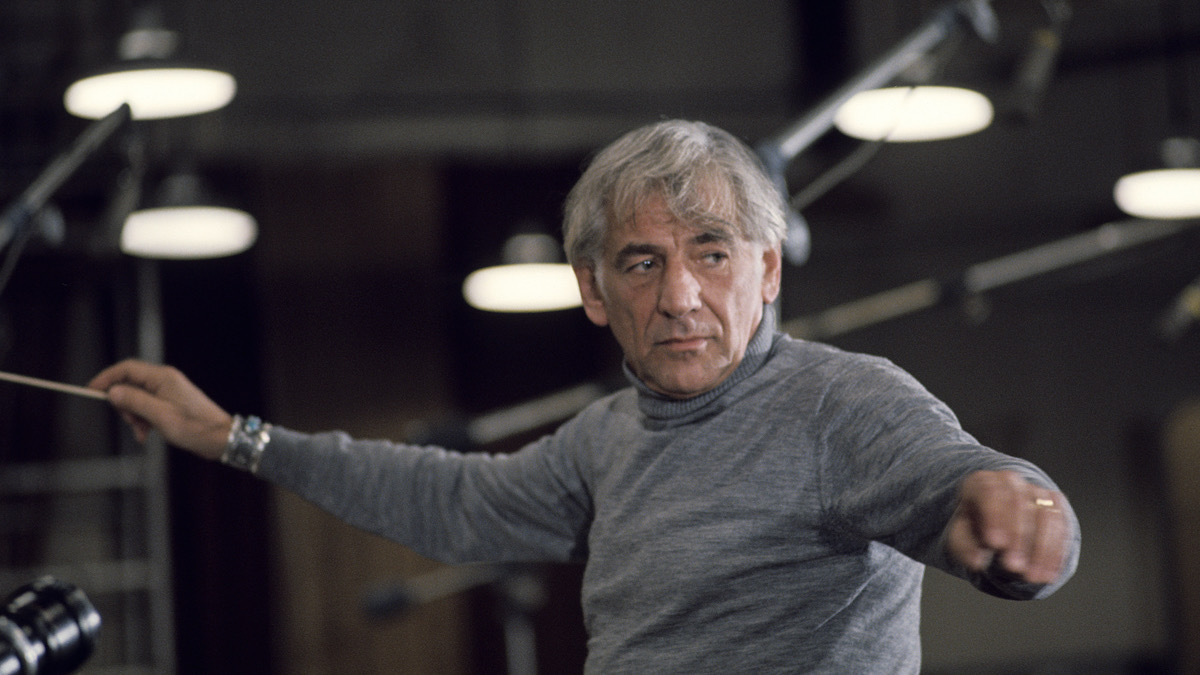Maestro, the Leonard Bernstein biopic directed by lead actor Bradley Cooper, releases on Netflix this week. As shown in the trailer for the upcoming film, its story will take particular focus on the EGOT-nominated composer’s personal life. Maestro chronicles Bernstein’s relationships with his wife, actress Felicia Montealegre (Carey Mulligan), and with fellow musician David Oppenheim (Matt Bomer), portrayed in the film as an affair between the two men.
While Bernstein and Oppenheim’s relationship in Maestro is pretty objective in its portrayal, the nature of the relationship between the two contemporaries has been open to interpretation by historians. As for Bernstein’s own sexuality, this has been open to analysis, attempting to get past the constraints of the homophobia of the time the late composer lived in.
Leonard Bernstein’s sexuality, explained
While Leonard Bernstein was married to actress Felicia Montealegre from 1951 until her death in 1978, Bernstein had multiple affairs during their relationship, said to be with both men and women. According to his daughter, Jamie Bernstein, Bernstein had an “intimate” affair with David Oppenheim, as well as his research assistant, Tommy Cothran, as she told People in 2023.
When discussing his sexuality, many scholars point to a 1941 letter to fellow composer Aaron Copland, where Bernstein suggested marrying his dentist’s daughter in order to appear as a heterosexual in the public eye, and avoid suspicion of homosexuality. In 1941, an outing would’ve undeniably affected Bernstein’s career in the music industry, and could have easily ended it entirely.
The letter can be interpreted as Bernstein looking for a “lavender marriage,” a common arrangement in early 20th-century showbusiness whereby a man and woman would marry to keep up the appearance of heterosexuality, for at least one person in the couple. However, Jamie Bernstein described her father to People as “bisexual,” in an interview that describes Bernstein as “deeply in love” with Montealegre.
However, in a letter between Montealegre and Bernstein, obtained by the Library of Congress, Felicia refers to her husband as a “homosexual,” but is accepting of Bernstein’s attraction to men. “You don’t admit to the possibility of a double life,” Montealegre writes, “but if your peace of mind, your health, your whole nervous system depend on a certain sexual pattern what can you do?”
It should be noted that the letter, written most likely fifty to sixty-five years ago, was written in a time where terms like “bisexual” were not commonly used, which came to prominence in the 1990s, long after Felicia’s death. However, it is still very much popular that Bernstein was homosexual, as the letter alludes to “a double life,” which could mean a facade of heterosexuality, or an attraction to both men and women.
It is also worth noting that Bernstein’s image of his own sexuality would have been shaped by the world around him, and external pressures and social conventions may have made him feel the need to conform somewhat, through relationships with women. It’s impossible to fully divorce Bernstein from the time he lived in and argue with full confidence over how he would identify in 2023, which is hardly an era of full acceptance in show business, either.
Bernstein died in 1990, at a time when homophobia was rampant, in particular towards homosexual men during fears over the AIDS epidemic, often referred to at the time as “gay cancer.” Historians tend to agree that the refusal of governments to take AIDS victims seriously and advocate for equal treatment and healthcare was a form of genocide against the LGBT+ community. Even at the end of Bernstein’s life, he was not freed from the social stigma of his era, and if anything, there was a heightened moral panic about homosexual men.
What we can say with confidence, however, is that Leonard Bernstein had an attraction to men, as shown through his own statements and confirmation from those who were closest to him. We can also know for sure that he had relationships with both men and women, said to be passionate and loving relationships in both cases. What is much more difficult to ascertain, is if he would have had relationships with women had he not been subject to homophobia and other external pressures to conform to social conventions at the time.
Denial of responsibility! TechCodex is an automatic aggregator of the all world’s media. In each content, the hyperlink to the primary source is specified. All trademarks belong to their rightful owners, and all materials to their authors. For any complaint, please reach us at – [email protected]. We will take necessary action within 24 hours.
Khushi Patel is a science fiction author who lives in Austin, Texas. She has published three novels, and her work has been praised for its originality and imagination. Khushi is a graduate of Rice University, and she has worked as a software engineer. She is a member of the Science Fiction Writers of America, and her books have been nominated for several awards.


